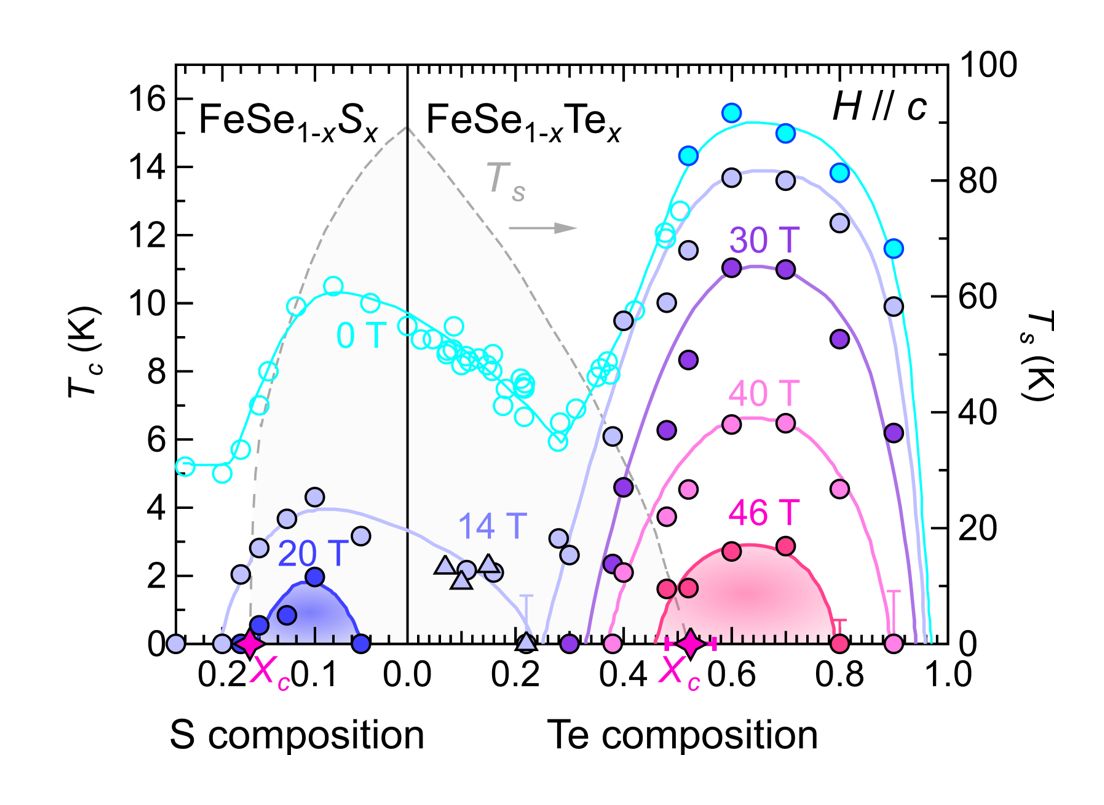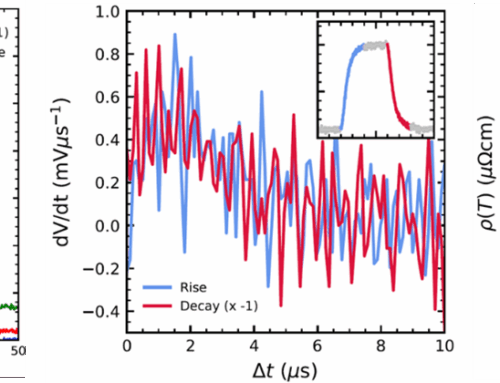Matija Čulo, Institute of Physics, Zagreb, Croatia and Nigel Hussey, HFML and University of Bristol, UK.
High-temperature superconductivity is one of the biggest unsolved problems in condensed-matter physics, due to its unconventional superconducting (SC) pairing mechanism, which goes beyond the standard electron-phonon interaction. Many materials with such an unconventional SC state commonly host an additional antiferromagnetic (AFM) phase that competes and/or coexists with the SC state. Interestingly, the SC transition temperature Tс is very often enhanced in the part of the phase diagram where this AFM phase transition is suppressed down to zero temperature, i.e., in vicinity of an AFM quantum critical point (QCP). Such a correlation has led to a strong belief that AFM quantum critical fluctuations play a decisive role in the SC pairing of unconventional superconductors. Researchers from HFML for the first time showed that a similar enhancement of Tс occurs also in vicinity of a pure nematic QCP. This research is a result of an intensive collaboration between HFML, University of Tokyo, University of Bristol, and the Institute of Physics (Zagreb, Croatia), the latter being strengthened through a recently EMFL-funded secondment of Matija Čulo. The study was conducted on iron-based superconductors FeSe1-xSx and FeSe1-xTex, which are unique in the sense that superconductivity emerges from a pure electron nematic phase – a peculiar state that breaks the rotational symmetry while preserving the translational symmetry of a material. Tс values for FeSe1-xSx and FeSe1-xTex were determined from electricresistivity measurements in high magnetic fields up to 35 T (HFML-EMFL) and 60 T (University of Tokyo), respectively. From such determined Tc, the researchers successfully constructed a combined Tс vs. x phase diagram of FeSe1-xSx and FeSe1-xTex, for different field strengths (see Figure). For zero field, Tс stays finite in the whole measured x range, with no obvious enhancement at the respective nematic QCPs (xс = 0.16 and 0.50 for FeSe1-xSx and FeSe1-xTex). Due to such behavior, it had long been believed that, in contrast to the AFM QCP, the nematic QCP has little or no influence on superconductivity in FeSe1-xSx and FeSe1-xTex. Our measurements, however, showed that the application of high magnetic field causes a suppression of Tc in such a way that two distinct SC domes emerge, the one for FeSe1-xTex being centered at xс ≈ 0.50, exactly where the nematic QCP occurs. Such behavior indicates that, in contrast to previous expectations, nematic quantum critical fluctuations may indeed play a dominant role in the SC pairing mechanism in FeSe1-xTex, opening a nematic route to high-temperature superconductivity.

Figure: Combined Tc vs. x phase diagram for FeSe1-xSx and FeSe1-xTex for different values of magnetic field H. Tc values are indicated by symbols (left axis), the nematic transition temperature Ts by the grey dashed line (right axis) and the nematic QCPs by the pink stars.
Enhanced Superconducting Pairing Strength near a Pure Nematic Quantum Critical Point, K. Mukasa, K. Ishida, S. Imajo, M. Qiu, M. Saito, K. Matsuura, Y. Sugimura, S. Liu, Y. Uezono, T. Otsuka, M. Čulo, S. Kasahara, Y. Matsuda, N. E. Hussey, T. Watanabe, K. Kindo, and T. Shibauchi, Phys. Rev. X 13, 011032 (2023)
https://journals.aps.org/prx/abstract/10.1103/PhysRevX.13.011032
Contact: nigel.hussey@ru.nl, mculo@ifs.hr






